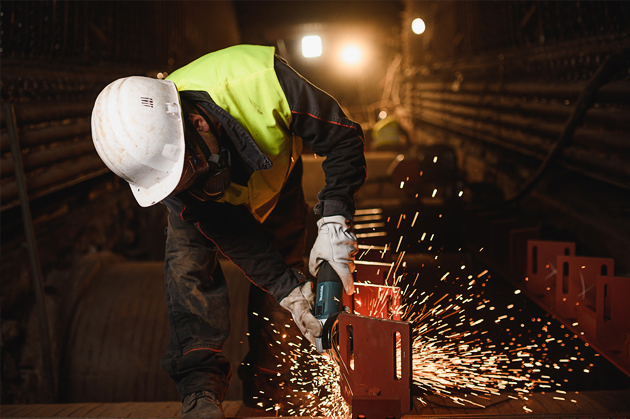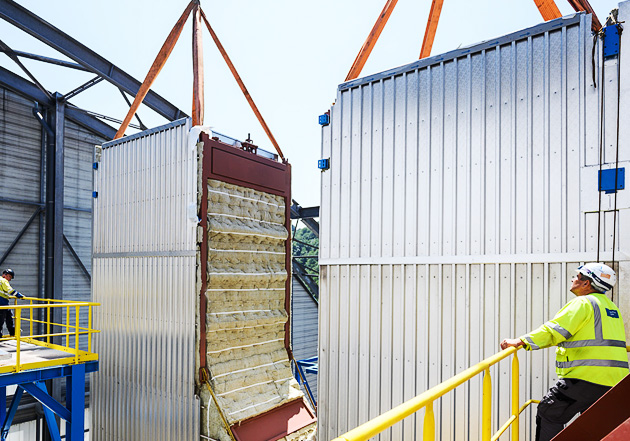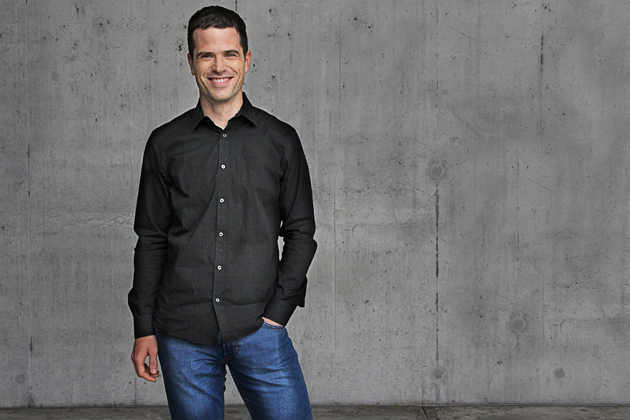
|
|
It is half-time for the current Waste Incineration BREF/BAT. It was introduced in December 2019 and must be implemented by December 2023. It is interesting to note that this “definition of best available techniques in economic and technical terms” has not yet been transposed into national law in all EU Member States. This means that not all plant operators know for certain which limits they will have to comply with going forward. While most plants are not expected to require retrofits to comply with the lower emissions limits, they will at the very least need to make some adjustments. We can help in either case, as our newsletter explains. We hope you find it an informative read.
|
Yours,
The Hitachi Zosen Inova Germany team
|
|
|
|
|
|
What does the new BREF/BVT mean for your plant?
|

|
|
In a very small number of cases, you really have to get to work to comply with the BREF/BAT requirements. HZI can help you with these as well as all the others.
|
|
|
The conclusions on best available techniques (BAT conclusions, contained in the BAT Reference Document or BREF) adopted by the European Commission in December 2019 for waste incineration contain new emission limits as well as rules on monitoring emissions and energy efficiency and other requirements. The new requirements need to be enshrined in national law (through a revision of the 17th Immission Control Ordinance in Germany, for example). Compliance is binding with immediate effect for newly built plants but subject to a four-year transition period ending in December 2023 for existing plants. In principle, there are three scenarios for existing plants, which tend to have higher emissions levels. Many already fall below the required limits thanks to complex, sophisticated flue gas treatment systems. This is partly due to the fact that some countries, such as Switzerland and the Scandinavian nations, have already defined limits below those of the new BREF in national laws or individual tenders.
|
In the second scenario, the plant is currently running close to the old limits, but the new limits are only slightly lower, meaning that it might well be possible to adapt plant operation to them with small adjustments. This can be done, for example, by optimising operating parameters, replacing the sorbent used in flue gas treatment with a more reactive substance or, in a lime-based sorption process, injecting lime into the combustion chamber in a precisely controlled manner. In quasi-dry flue gas treatment processes, increasing the amount of active substance used is often all that is needed to achieve lower emissions of harmful acidic gases such as HCl and SO2. In all cases, it makes sense to test now whether operating adjustments will suffice and how the plant behaves in its new operating state. Our experts can help with this testing.
|
|
Something else to consider is a rethink of the whole flue gas treatment system, which is almost always worthwhile for plants that are more than 20 years old. Since we offer extensive in-house expertise in all the various technologies, we can combine the best available techniques in a way that meets your needs perfectly – optimised for CAPEX/OPEX, naturally. Compliance with the BREF is a highly plant-specific issue. We can offer you support right now, both in preliminary analysis of your plant’s BREF-critical points and in implementation, testing and retrofitting. In most cases, all we need are the plant’s operating data and a handful of specifications – we do not even need to visit the site. At any rate, you should not wait until the last minute! You can find further information on the WI BREF and BAT documentation here.
|
|
|
|
Rethink Yields Improvements
|

|
|
Lifting one of the 12 20-tonne tandem fabric filter units into place.
|
|
|
When your flue gas treatment no longer conforms to the required emissions limits or is in urgent need of an upgrade, it makes sense to rethink the whole concept. This is exactly what we are doing at the moment for one of our customers, converting its wet flue gas treatment with a capacity of 50,000 m3/h STP into a dry system with additional energy extraction. The old system used conventional SNCR in conjunction with a fabric filter and two scrubbers. In the absence of a heat exchanger, some of the energy in the flue gas literally evaporated in the scrubber. The customer had three reasons to opt for an entirely new concept: 1. the need to bring the NOx level below 80 mg/m3 (STP, dry, 11% O2); 2. the desire to use the energy evaporating in the scrubber and thus increase the plant’s energy efficiency; and 3. the desire to avoid the waste water treatment that is necessary with wet flue gas treatment. Waste water treatment resulted in high operating and maintenance costs, partly due to the need to involve external experts.
|
A concept was developed together with the customer that will meet the BREF requirements for the next 15 years. An extra economiser was added behind the boiler. Flue gas treatment was implemented as a multi-stage process comprising a fabric filter with a bicarbonate reactor, a mesh catalyst with ammonia injection and a further downstream reactor and fabric filter with prior hydrated lime and activated carbon injection.
|
|
The SCR concept is ideally suited to low NOx and ammonia slip emissions. Using the catalyst reduces the activation energy of the chemical reaction, so NOx reduction can take place at much lower temperatures than in an SNCR system. Additional heat is extracted upstream of the second fabric filter to control the temperature for fine filtration in that filter. The system is robust, easy to operate and economical in terms of resources. The somewhat higher cost of the additives is offset to a certain extent by the savings made on maintenance costs, in particular for the waste water treatment system. The customer gets the low emissions and simple operation it wanted, with the added benefit of 2 MW of extra heat energy per line being extracted for further use. Sometimes, emissions regulations can inspire you to raise your plant to a whole new level of efficiency
|
|
|
|
|
|
People at HZI: Thomas Albrecht – a Passion for Complex Systems
|

|
|
Thomas Albrecht, our expert in flue gas treatment and BREF requirements.
|
|
|
Thomas Albrecht exudes an air of the utmost precision in what he does and how he speaks. He is fully engaged throughout the interview. When he talks about “his” plants and technologies, you can sense his genuine enthusiasm. He is not simply repeating words he has learned by heart, he has a real passion, an affinity for complex systems. It is no wonder, therefore, that Thomas sees the BREF as an exciting challenge. Thomas, a qualified chemical engineer, joined HZI in 2008. He was initially a process engineer in servicing and later became a retrofit project manager. As Senior Engineer in Flue Gas Treatment, he is now in overall charge of process technology for concepts in the tender phase in addition to supporting Process Engineering in the development of new plants and reviewing the guarantees provided by HZI at the commissioning stage.
|
It does not take long to work out what fascinates him about the BREF and his job in general: the new requirements mean that existing standard systems have to be rethought to find new, even more complex solutions. Each plant is unique, so each solution must be unique too. Of course, every new solution automatically moves the whole company forward in terms of technological progress. HZI does not solve problems for politicians or the BREF but always directly for the customer. The wide range of new technologies currently under discussion for flue gas treatment, such as carbon capture solutions and residue handling, provide Thomas with further welcome motivation, as does the issue of how to market byproducts of flue gas treatment that are sadly still dismissed as waste. Thomas has a clear opinion on waste in general: “I agree with the idea of preventing, reusing or recycling waste first and foremost. Our technology only comes into play as a last resort. That said, I’m convinced that it’s indispensable. There will always be waste, and our technology is the best way to minimise its environmental impact.”
|
|
He also has strong views on the BREF: “The BREF and lower emissions limits generally are of course good for the environment, but the BREF is starting to head into a grey area where the results don’t always justify the expense – especially in waste incineration plants, which are subject to very strict emissions controls. The limits on some substances are already so low that reducing them further would force us to upgrade our measuring instruments just to make sure we can reliably prove that we’re complying with them, but the gains in terms of environmental impact are negligible in some cases. Lower limits on oxides of nitrogen do make sense, however, because levels of these are still very high. The technology to bring them down already exists, and it should be used. Generally speaking, the choice of concept in flue gas treatment always depends on politics – it’s regrettable, for instance, that we still aren’t allowed to have a plume coming from the stack of waste incineration plants in many countries, even though it would result in more efficient flue gas treatment and energy use.
|
|
|
|
|
|
|
Imprint: This newsletter is sent by Hitachi Zosen Inova Deutschland GmbH, Waltherstrasse 49-51, 51069 Cologne, Germany. Represented by the managing directors Mikko Immonen and Carsten Stölting. Local Court Cologne / HRB 83251. VAT ID No.: DE 299 340 714. Contact: +49 (0) 221 669576-10; info-germany@hz-inova.com. Responsible for editorial content: Carsten Stölting Unsubscribe: If you do not wish to receive this newsletter, you can unsubscribe at any time using the link below.
|
|
|

|
|
|
|
|
|